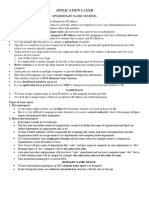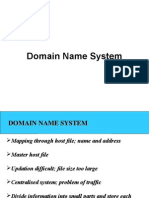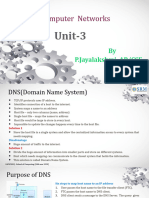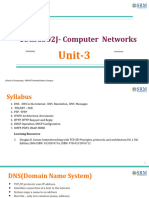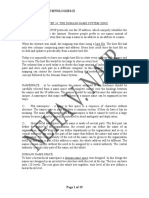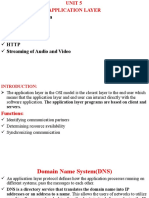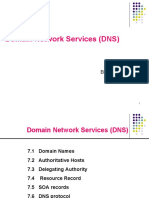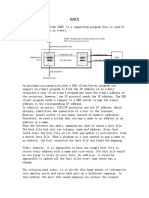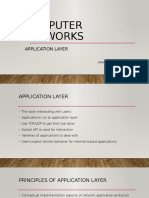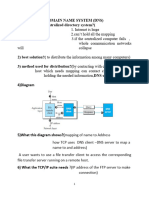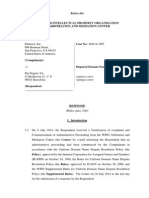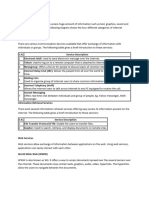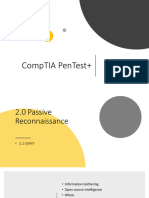0% found this document useful (0 votes)
10 views22 pagesApplication Layer Protocols
Chapter 4 discusses the Domain Name System (DNS), which maps human-readable domain names to IP addresses using a distributed database approach. It explains the hierarchical name-space structure, types of domain names (FQDN and PQDN), and the functioning of DNS queries and servers. Additionally, it covers the role of registrars in adding new domains and introduces the Dynamic Domain Name System (DDNS) for automatic updates.
Uploaded by
Ajay KumarCopyright
© © All Rights Reserved
We take content rights seriously. If you suspect this is your content, claim it here.
Available Formats
Download as PDF, TXT or read online on Scribd
0% found this document useful (0 votes)
10 views22 pagesApplication Layer Protocols
Chapter 4 discusses the Domain Name System (DNS), which maps human-readable domain names to IP addresses using a distributed database approach. It explains the hierarchical name-space structure, types of domain names (FQDN and PQDN), and the functioning of DNS queries and servers. Additionally, it covers the role of registrars in adding new domains and introduces the Dynamic Domain Name System (DDNS) for automatic updates.
Uploaded by
Ajay KumarCopyright
© © All Rights Reserved
We take content rights seriously. If you suspect this is your content, claim it here.
Available Formats
Download as PDF, TXT or read online on Scribd
/ 22
